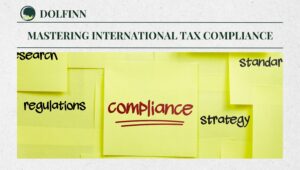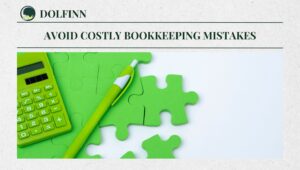
Simplifying the New Leasing Standard
The introduction of ASC 842, the new lease accounting standard, has fundamentally reshaped how organizations recognize leases on their balance sheets. With the requirement to record leases as liabilities and right-of-use (ROU) assets, determining the correct discount rate has become a critical element in financial reporting. This article explores the complexities and solutions surrounding the discount rate determination process under ASC 842, helping organizations navigate this challenging aspect of compliance.
Why the Discount Rate Matters
The discount rate directly affects the present value of lease payments, which in turn determines the value of both the ROU asset and the lease liability. Accurate determination is essential because:
- Misstated Liabilities: An incorrect rate can overstate or understate lease liabilities, skewing financial statements.
- Lease Classification: The rate influences lease classification (operating vs. finance), affecting profit and loss reporting.
- Key Financial Metrics: Metrics such as debt-to-equity ratio and EBITDA can be impacted, potentially influencing stakeholders’ perceptions.
ASC 842 mandates the use of either the rate implicit in the lease (RIIL) or the incremental borrowing rate (IBR). Private companies may elect to use a risk-free discount rate as a practical expedient, but each option presents unique challenges and considerations.
Rate Implicit in the Lease (RIIL)
The RIIL is the discount rate inherent in the lease agreement. It reflects the lessor’s expected return on the lease. While this is the preferred rate under ASC 842, determining the RIIL requires detailed information that may not always be available to the lessee, such as:
- The fair value of the leased asset.
- The residual value of the asset at the end of the lease term.
- Initial direct costs incurred by the lessor.
Given these requirements, lessees often find it impractical to use the RIIL and instead turn to the incremental borrowing rate.
Incremental Borrowing Rate (IBR)
The IBR is defined as the rate a lessee would pay to borrow, on a collateralized basis, the amount needed to fund the lease payments over a similar term. This is the default option when the RIIL is unavailable. However, determining the IBR involves a nuanced approach, as it must reflect:
- Lessee’s Creditworthiness: The credit profile of the lessee significantly influences the borrowing rate.
- Collateralization: Since leases are typically secured by the underlying asset, adjustments for collateral must be made.
- Lease Term and Payment Timing: The IBR should align with the duration and structure of the lease payments.
Challenges in Determining IBR
- Lack of Comparable Data: Many lessees do not have recent borrowing transactions to serve as a benchmark.
- Complex Adjustments: Factors like the collateral’s value and economic environment add complexity.
- Multinational Considerations: For entities with operations in multiple jurisdictions, currency exchange rates and local political risks complicate the process.
Despite these challenges, developing a robust IBR determination process is essential for compliance.
Risk-Free Discount Rate: A Private Company Option
To simplify compliance, ASC 842 allows private companies to use a risk-free discount rate, such as yields on U.S. Treasury securities. While this practical expedient reduces complexity, it’s not without drawbacks:
- Higher Liabilities: The risk-free rate is often lower than an IBR, leading to inflated lease liabilities and ROU assets.
- Impact on Lease Classification: Increased liabilities can push certain leases into finance classification.
- IPO Considerations: Companies planning to go public may need to retrospectively eliminate the use of the risk-free rate, adding administrative burden.
Organizations must weigh these factors before electing the risk-free rate.
Building an Effective IBR Framework
To establish a consistent and defensible IBR, organizations should follow these steps:
- Assess Creditworthiness:
- Use internal or external credit ratings to determine the lessee’s credit profile.
- Consider parent-subsidiary relationships for consolidated entities.
- Adjust for Collateralization:
- Incorporate the value of the leased asset as collateral.
- Ensure adjustments align with market practices for secured loans.
- Incorporate Lease-Specific Factors:
- Match the IBR to the lease term and payment frequency.
- Account for jurisdictional risks, including currency and political factors.
- Develop Custom IBR Curves:
- For multinational companies, create region-specific IBR curves that reflect local economic conditions.
- Document Methodologies:
- Maintain detailed records of assumptions, data sources, and calculations.
- Regularly update IBRs to reflect changes in market conditions or credit profiles.
Leveraging Technology and Expertise
Modern tools and expert consultants can simplify the IBR determination process:
- Lease Accounting Software: Many platforms offer built-in IBR calculators with customizable parameters.
- Third-Party Providers: Credit rating agencies and financial advisors can provide tailored IBR estimates.
- Market Data Integration: Utilize publicly available data, such as bond yields, to benchmark rates.
By leveraging these resources, organizations can streamline compliance and improve accuracy.
Practical Examples of IBR Application
Consider the following scenarios to illustrate how the IBR is determined:
- Single-Entity Lessee:
- A U.S.-based company enters a 5-year equipment lease.
- The company lacks recent borrowing history, so it uses market data from secured loans for similar terms and adjusts for its credit profile and collateral.
- Multinational Corporation:
- A global organization with leases in multiple currencies develops region-specific IBRs.
- It incorporates local government bond yields and adjusts for currency exchange risks.
- Private Company Using Risk-Free Rate:
- A small private firm elects the risk-free rate for simplicity.
- It recognizes higher lease liabilities but avoids the complexity of IBR determination.
Key Takeaways and Best Practices
- Tailored Approach: Each organization’s IBR process should reflect its unique circumstances, including creditworthiness, lease portfolio, and geographic footprint.
- Proactive Planning: Develop and implement an IBR framework early to avoid last-minute compliance challenges.
- Documentation: Maintain transparent records to support audit requirements and stakeholder inquiries.
ASC 842’s discount rate requirements may seem daunting, but with a structured approach and the right resources, organizations can achieve compliance while minimizing financial reporting risks. By prioritizing accuracy and consistency in IBR determination, businesses can navigate the complexities of lease accounting with confidence.
FAQs
- Can a collateralized rate exceed an unsecured rate?
- No. Collateral reduces the lender’s risk, resulting in a lower borrowing rate.
- What if no comparable borrowing exists?
- Use market benchmarks and adjust for entity-specific factors like credit risk and collateral.
- Is it acceptable to ignore collateral adjustments?
- Only if immaterial and supported by documented evidence.
- Can a lender provide the IBR?
- Yes, but the lender’s estimate must reflect entity-specific considerations.
Summary
The introduction of ASC 842 has reshaped lease accounting by requiring organizations to recognize leases on their balance sheets. A critical aspect of compliance is determining the correct discount rate, which directly impacts lease liabilities and right-of-use assets. This blog explores how to navigate this complex task, covering the rate implicit in the lease, incremental…
Latest Posts
- Top Cash Flow Forecasting Tools You Can’t Ignore for Global Businesses

- Mastering Profit vs. Cash Flow: 5 Key Strategies for Financial Success

- 5 Key Advantages and Disadvantages of Outsourced Accounting: Is Outsourced Accounting Worth the Risk?

- Mastering Cash Flow Management in 2025: 7 Proven Strategies for Financial Success

- Mastering International Tax Compliance: 7 Crucial Strategies for Multinational Success

- 5 Common Bookkeeping Mistakes Small Businesses Make and How to Avoid Them

